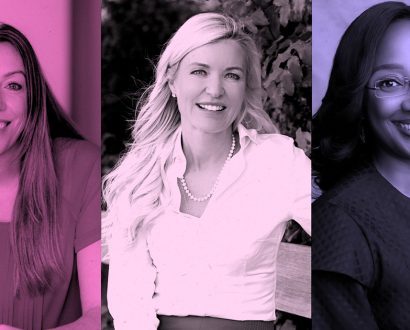While organizations may be familiar with racial and gender diversity, capitalizing on generational diversity in the workforce can enhance an organization’s culture and productivity. It can also be a source of conflict and unhealthy competition when left unaddressed.
Generational stereotypes and labels, endorsed by older generations, have always existed despite the reality that every generation comprises diverse personalities. Baby Boomers, for instance, are notorious for their reluctance to adopt technology and apparently prefer a good old-fashioned meeting. For Millennials, born between 1977 and 1992, the labels don’t paint a particularly pretty picture either.
Entitled, lazy, bad work ethic and financially illiterate are just a few of the commonly held beliefs about Millennials. Yet, it is this generation that are now filling leadership positions and will continue to do so into the future.
“We want to be able to really ensure that the leaders have the kind of competencies to accept people from all kinds of backgrounds and be able to get them to work really well together.”
Millennials will be the ones meeting the needs of a global workforce in most organizations. They will be leading teams composed of their peers as well as younger and older generations, whose ideas and values may differ significantly.
As the first group of workers to embrace technological change and the forces of globalization that have shaped them, they are able to navigate complex social networks and are accustomed to instantaneous feedback.
They are also the purpose-driven workers in your organization who have responded to information overload by asking “why” and finding purpose in the tasks they are given.
Taking over the workforce

An estimated 75 percent of Millennials will comprise the global workforce by 2025, a figure that will continue to rise as Baby Boomers make the transition into retirement. Just in the United States, Millennial job turnover amounts to US$30.5 billion a year. And with 43 percent of Millennials contemplating early retirement, it’s clear that managers who understand and support their development will reap the benefits.
Responding to generational differences in the workplace equips managers with the insights needed to help employees meet organizational objectives and capitalize on the strengths of each generation.
“Millennials and gen Zs tend to view the world very differently, and view the way work should happen very differently from the older generations.”
For multi-generational workforce speaker and author Vivek Iyyani, harnessing the full potential of a generationally diverse workforce results in enhanced productivity and innovation.
“We live in a very different world, a world that’s fully mixed,” Iyyani says. “It’s like a potluck of different flavors. So, we want to be able to really ensure that the leaders have the kind of competencies to accept people from all kinds of backgrounds and be able to get them to work really well together.”
The Singapore-based motivational speaker and consultant has worked with large corporations, including Oracle, Booking.com, Schroders and Delta Airlines to recruit and retain employees across generations. He’s also become a global authority on tackling generational disconnect.
“Millennials and gen Zs tend to view the world very differently, and view the way work should happen very differently from the older generations,” he says.
Impacted by change

It was while working with students that Iyyani first became acquainted with certain recurring trends – quarter-life crisis, graduate remorse, job hopping and helicopter parents – that students and peers in his social circle were mentioning.
“What really happened when Millennials came into play was the fact that the world went through a lot of changes, the technological changes, the social changes, the economic changes,” he says. “All of these changes shaped the mindset of Millennials, which then really widened the gap in terms of their perspective of what they want to prioritize, what their preferences are.”
While his first book, Empowering Millennials: The 5 Step Sequence to design a life of Fun, Freedom & Fortune, may have been written for university students, it caught the attention of business leaders who were looking for answers to one of their biggest pain points: managing Millennials.
“Once you are able to empathize and think from the other person’s point of view, teams can collaborate a lot more effectively.”
“When I launched that book, the media picked it up, and then corporates started calling me and asking me, ‘Can you do something on managing Millennials because our managers feel like it’s a struggle working with them?’ And, that’s what got me into the space of understanding the Millennial mindset at the workplace,” he recalls.
Iyyani inadvertently carved out a niche for himself that has led him to speak at events and conduct workshops around the globe in order to help iron out generational tensions through raising awareness.
Whether older generations feel undervalued for their resilience and experience or younger generations don’t feel recognized for what they bring to the table, multi-generational teams have the potential to thrive.
“Once you are able to empathize and think from the other person’s point of view, teams can collaborate a lot more effectively,” Iyyani explains. “In fact, if you include everyone, diversity really helps with innovation, it helps with coming up with new initiatives and that is a very powerful thing for an organization to have.”
Key competencies

In his latest book, The Millennial Leader: Leading Across Generations in the New Normal, Iyyani explains the key competencies Millennials should arm themselves with to become effective leaders: clarity, connection, candor, coping mechanism and culture.
“Millennial leaders will face a whole lot of different challenges that the older generations perhaps didn’t have to go through,” he emphasizes. “So in the book, I talk about how it’s really important to have clarity for you to be able to really focus on building those competencies that you need as a leader, in order to survive and thrive in the new world of work, in the new normal today.”
“Really leaning into the people and the challenges that they are facing will help you to really focus and become a better leader.”
Managing a team today can mean dealing with burnout, remote work and the question of how to keep a multi-generational workforce engaged and motivated.
“Really leaning into the people and the challenges that they are facing will help you to really focus and become a better leader,” he says.
“For Millennials to be able to deal with these challenges, they must personally be very clear on what their stance is. So they must have clarity about themselves, what their own leadership style is, what their expectations are, and how they are then going to manage the people in the team,” Iyyani explains.
Iyyani’s top four leadership tips

1. Give feedback that propels people forward
Learning to provide feedback that inspires people to change will shine a light on your capacity as a leader to be seen as a mentor, as opposed to a boss or supervisor.
“Leaders of the past had a very seagull kind of approach,” Iyyani says. “They’ll fly in, they’ll give you the feedback and then they’ll fly off. But today, we want to have more one-on-one conversations.”
2. Be aware of generational behavioral traits
For gen Z and Millennials, Tinder ghosting, Instagram envy and anxiety that stems from excessive screen time can make it challenging to have difficult conversations and detach from technology-induced stress.
“Younger generations kind of avoid difficult conversations. They don’t know how to hold that space.
“Younger generations kind of avoid difficult conversations. They don’t know how to hold that space. It’s your responsibility to take care of the people in your team and they will take care of the task,” he says. “Being able to build that psychological safety, to have difficult conversations with them, is really important.
“Having work–life balance and managing their stress and anxiety is something that they really appreciate. Internal mobility is also something that they are looking for.”
3. Identify and overcome your biases
The digital world we live in today can make leaders hesitant to bring on board employees who aren’t technologically savvy. Iyyani thinks otherwise.
“Millennial leaders are actually not very keen on working with rehires because there is a technological gap, which means that the leaders need to really break down the steps for them to understand how the technology works, and then really hand-hold them,” he says.
Instead, he believes leaders should take a look at their biases and ask themselves how they can bring out the strengths in people who are re-entering the workforce with a technology gap.
4. Be proactive
While developing an eagle eye for generational traits might not be outlined in your job description as a manager, it’s more or less an unspoken requirement for a productive environment.
“What are some of the traits of common behaviors that you are noticing on the ground? Then address them head on as soon as possible,” Iyyani advises. “If you are a proactive leader, you will look into these things, even though it’s not part of your key job, because you care about the people.”
The question is, what should we retain from old school leadership practices that continue to add value to the world we live in today?
“Employees of the past, the older generation, have a toxic badge of honor where they often think, ‘I’ve gone through the worst, and I survived it’.”
“Employees of the past, the older generation, have a toxic badge of honor where they often think, ‘I’ve gone through the worst, and I survived it,’” Iyyani reflects. “So to be able to enforce and bring in that resilience is something that I believe to be very useful.”
He also highlights how leadership styles aren’t necessarily good or bad, but instead more or less suitable for different contexts.
“In times of turmoil, traditional leadership really brings in a lot of direction and people feel a lot more safer with someone who knows what they’re doing,” he concludes.
Iyyani’s latest book The Millennial Leader: Leading Across Generations in the New Normal can be purchased here.







